Grand Trunk Railway
Location: Across Canada and into midwestern U.S.; 1859-1923
Headquartered in Montreal, Quebec.
Grand Trunk Pacific
1906 map
Combined GTP and NTR before completed.
Shows numerous alternate routes proposed.
Grand Trunk
System 1908 article
GTS lines east
map
GTS lines west
map
Brantford Railways
1901 article
Shipper invoice
GTR 1915
GTR
Toronto Suburban Service
Time Table 1891
Predecessor roads
Scroll to very bottom for links
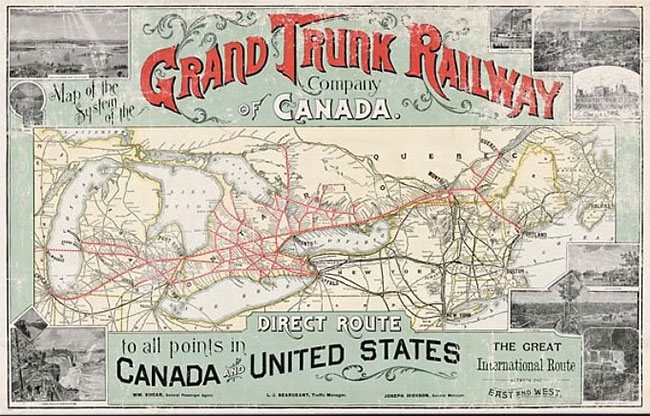
The Grand Trunk Railway (G.T.R.) was officially opened between Sarnia,
Ontario, and Portland, Maine, on November 21, 1859. This first version
of the G.T.R. did not run through Hamilton, Ontario; instead, it ran
north of Hamilton through Toronto and Guelph. It was not until the G.T.R.
amalgamated with the Great Western Railway (G.W.R.) that it came to
Hamilton.
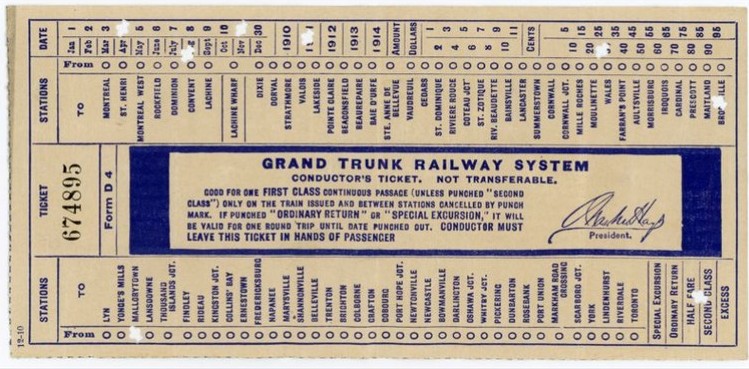
Conductor's ticket. 1911 These were issued for onboard
sales where no station personel on duty.
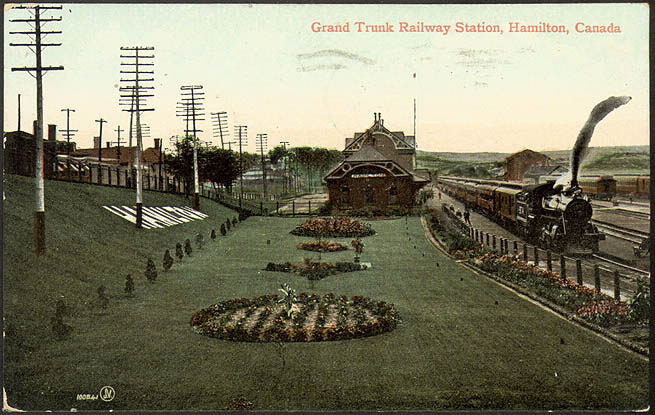
A postcard depicting the Grand Trunk Railway station
in Hamilton
Valentine & Sons Ltd.

Postcard cancelled 3.30 PM March 20,1911 in Galt, Ontario.
Promoting International Limited between Montreal, Toronto, Detroit
and Chicago.
"The finest and fastest train in Canada"
Old Time Trains Archives
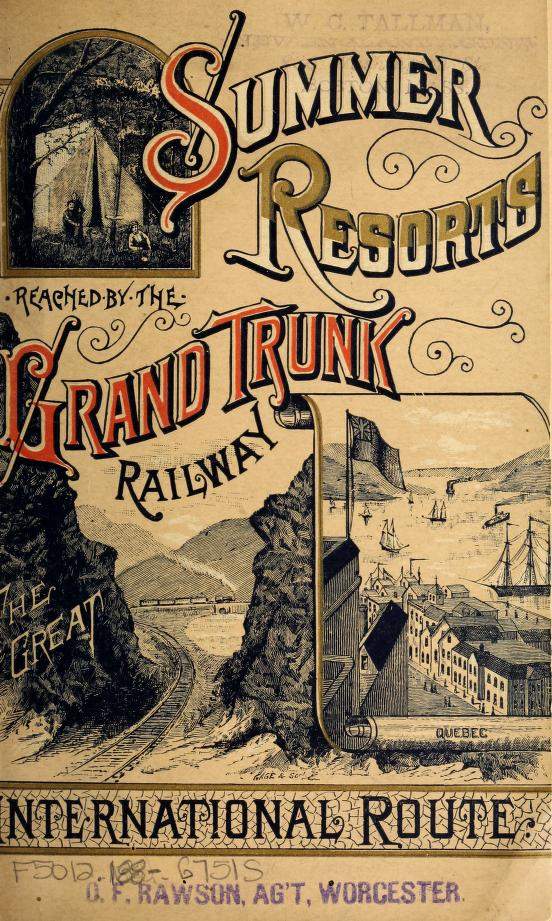
Travel brochure
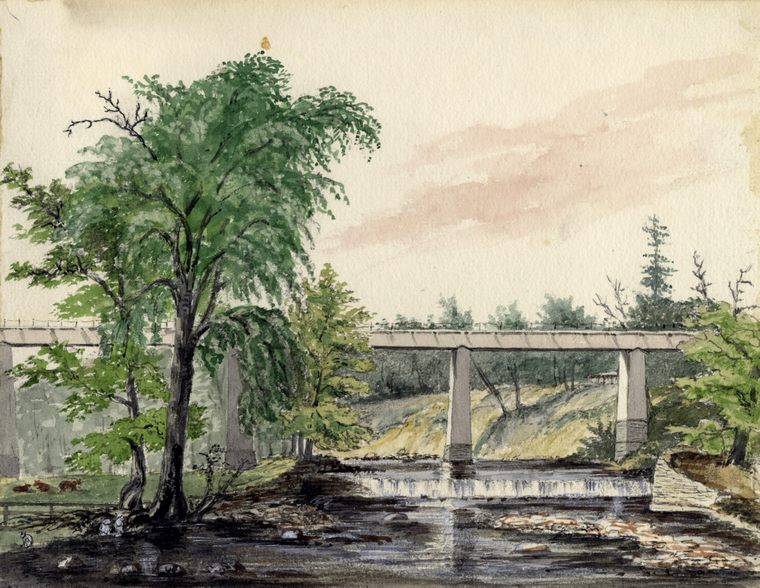
Bridge over River Humber in Weston, ON. Early painting.
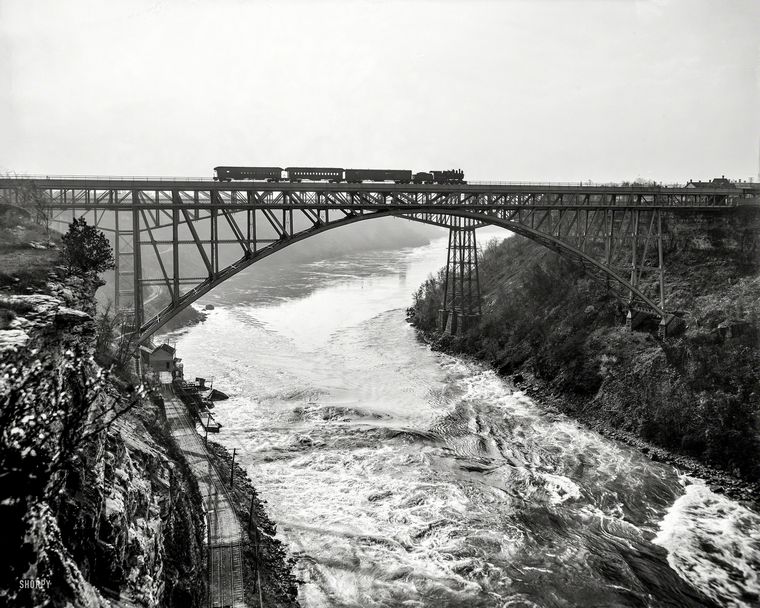
Bridges over the Niagara Gorge. Note: Behind the railway
bridge is an almost hidden second (road) bridge.
In 1845, the cities of Montreal, Quebec, and Portland, Maine, agreed
to build two railways that would meet at some point between them. John
A. Poor, on behalf of Portland, chartered the Atlantic and St. Lawrence
Railway Company (A.St.L.). Alexander Galt of Sherwood, Quebec, chartered
the St. Lawrence and Atlantic Railway Company (St.L.A.). However, construction
was often delayed due to financial concerns, especially on the Montreal
side.
Meanwhile, in 1852, the Canadian government and British contractors
began planning what was going to be, at the time, the longest railway
in the world. The government wanted to build a main rail line (or "trunk")
connecting all settled areas of Canada to railways with an Atlantic
port. Existing railways were not expansive enough, and canals were useless
when they froze over in the winter. The first conception of this "grand
trunk" railway would have stretched from Hamilton (and the Great
Western Railway) to Montreal (where it would connect with the St.L.A.).
However, an unfinished line from Montreal to Toronto, Ontario, inspired
Prime Minister Hincks to change his plans for the G.T.R.
Instead of simply connecting various other lines, the G.T.R. would amalgamate
or lease these lines under its own name. The G.T.R. was re-conceived
along the following lines:
* the G.T.R. "proper" would run from Sarnia to Guelph (both
in Ontario).
* amalgamate with the St.L.A. of Montreal.
* lease the A.St.L. of Portland.
* absorb Quebec and Richmond Railway.
* acquire Montreal to Toronto line once it has been constructed.
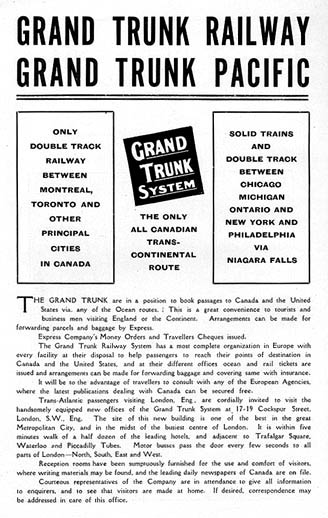
An advertisement for the Grand Trunk Railway
The G.T.R. would, at that point, stretch from Sarnia on
the western border of Southern Ontario, to Quebec City in the east,
and south-east to Portland, Maine.
The original plan for a 330-mile line from Montreal to Hamilton had
grown into a 1,100-mile expanse across some of the most-populated areas
of the country. The expected cost rose from £3 million sterling
to £9.5 million.
Unfortunately for residents of Hamilton, the new plan did not include
their city. They would have to wait until the G.T.R. amalgamated with
the Great Western Railway.
The two railways amalgamated in 1882. The reasons for the union were,
essentially, efficiency and cost-saving. By bringing the two railways
together, they could eliminate duplication of directors and other officials.
Also, the G.T.R. could save mileage by using the more direct routes
of the G.W.R., especially those routes through Hamilton.
While the G.T.R. took over all the assets of the former G.W.R., it did
not make any changes to the routes or stations in Hamilton. The station
at Stuart Street continued to serve in this company as it had in the
last one.
On April 28, 1889, an accident occurred in close proximity to the site
of an earlier tragic accident that had involved the Great Western Railway.
Over 20 people were killed, and another dozen were injured, when a train
derailed at the "Y" junction between Copetown and Dundas,
Ontario. According to the coroner's jury, a combination of a broken
wheel and exessive speed was to blame for the loss of life.
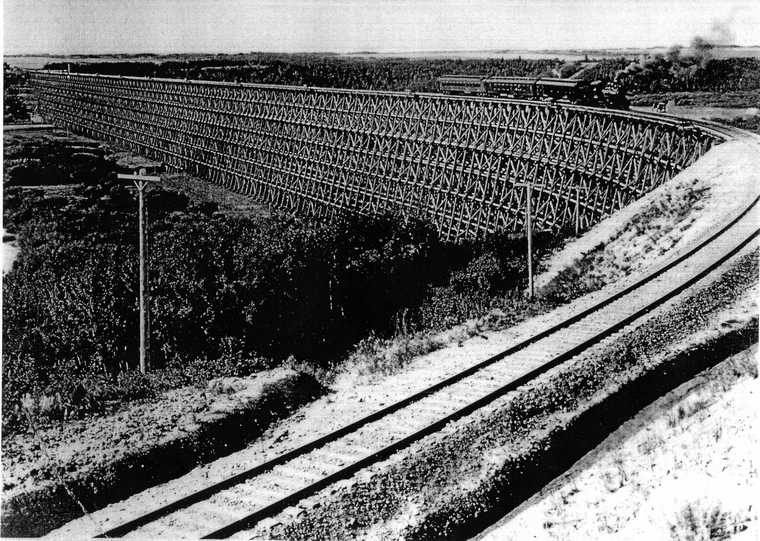
GTP massive trestle with train stopped (note
smoke blowing to one side) posed for photograph. Camrose, AB 1918
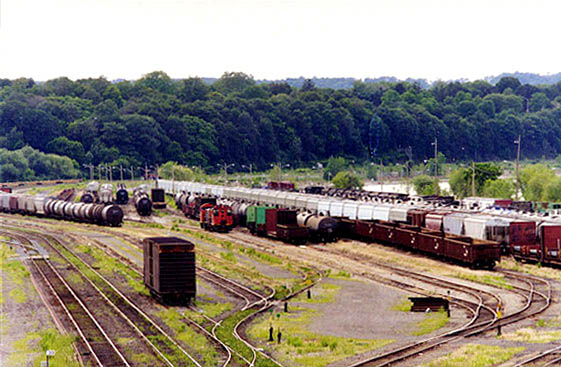
The Canadian National Railway tracks, as seen from the
Stuart Street bridge (July 2000)
In 1919, the Grand Trunk Pacific Railway (G.T.P.R.), a holding of the
G.T.R., became unable to continue profitably. The G.T.R., its parent
company, was having troubles of its own and was not able to save the
G.T.P.R. The Dominion Government took over the stock of the two rails,
and all of the G.T.R.'s other holdings, in 1919. In 1923, the G.T.R.
and G.T.P.R. became amalgamated with the Canadian National Railways.
An interesting fact about the G.T.R. is that Thomas Alva Edison worked
at the Stratford branch as a telegraph operator. He was fired for neglecting
his work in favour of his hobby, inventing.
References
Clipping File - Hamilton - Railways - Grand Trunk Railway. Special Collections,
HPL.
Clipping File - Hamilton - Railways - Grand Trunk Railway (Accident
1889). Special Collections, HPL.
Clipping File - Hamilton - Railways - History. Special Collections,
HPL.
Currie, A.W. The Grand Trunk Railway of Canada. Toronto: University
of Toronto Press, 1957.
Hamilton Herald Scrapbook - vol. R0.1 Railways. Special Collections,
HPL.
Hamilton Times Scrapbook - vol. R0.1 Railways. Special Collections,
HPL.
Picture Collection - Hamilton - Railways - Grand Trunk Railway. Special
Collections, HPL.
INDUSTRIAL HAMILTON: A TRAIL TO THE FUTURE
The Grand Trunk Railway
Material is from Canada's Digital Collections (CDC). CDC
was operated by Industry Canada between 1996 and 2004 to provide young
Canadians with skills and experience in preparing digital Canadian content
of local, regional and international interest. The various collections
that were produced during this time period have now been archived by
Library and Archives Canada. It is no longer online and was resurrected
here from the Wayback Machine Internet Archive.
Predecessor roads
Buffalo
Brantford and Goderich
Later, Buffalo and Lake Huron
Cobourg and Peterborough
Later, Cobourg, Peterborough and Marmora Railway and Mining Company.
Georgian Bay
and Wellington
Northern Railway
of Canada
Predecessor; Ontario, Simcoe and Huron.
Wellington Grey and Bruce
